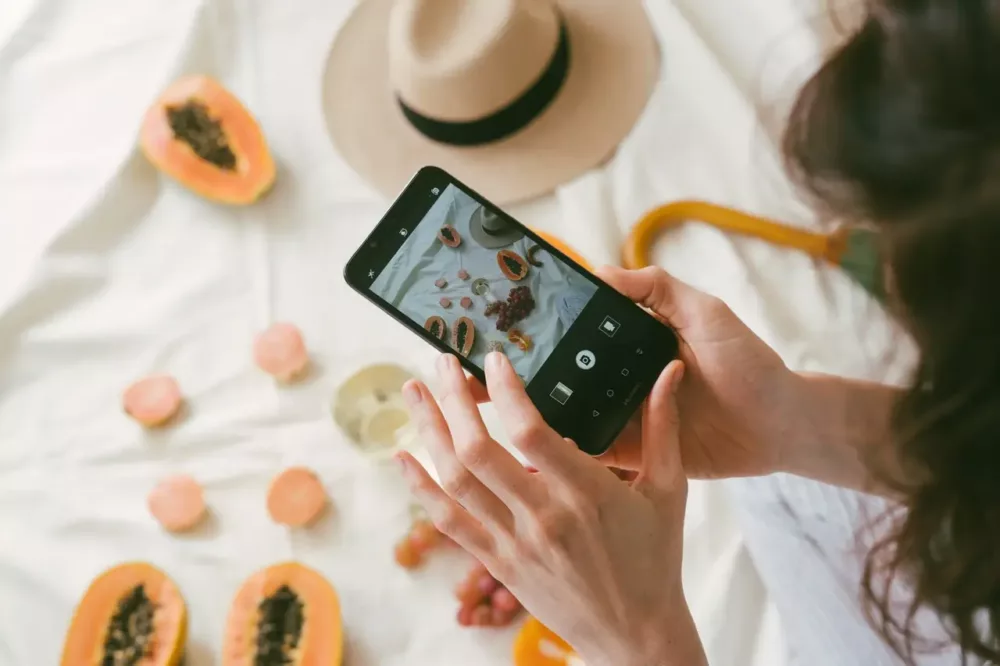A few years back, DSLR or digital cameras were used to capture images of landscapes or special moments in one’s own life. Though these cameras are still in use to this day, cell phone photography is quickly gaining more and more fame with time. Improvement in quality for cameras such as higher megapixels, better lens, and more storage is rendering the use of cell phone cameras more mainstream.

But, most of the pictures taken with cell phone cameras are still far from being perfect.
Luckily, there are methods to obtain better results through your cell phone camera.
Cleaning the Lens:
Before taking any snaps, you might want to start by making sure that your gear is ready. Cleaning the lens is of primary importance, and you should make it a habit or a pre-photography ritual.
Wiping the lens with rough material or wet cloth might end up damaging the lens in time. It is best to have a softer material kept, especially for cleaning the lens.
Avoid Digital Zooming:
Most cell phones have “Digital Zoom” when it comes to their cameras. Unlike optical zoom, digital zoom decreases the quality of your picture (lower pixels in the shot). Some cell phones companies are beginning to use optical zoom in their cameras.
To avoid digital zoom, moving closer to the subject could play a vital role. Phone images often tend to be relatively tiny due to lower resolution; the best way to avoid that is to get closer. It is better to find the optimum distance from the subject, i.e. which is neither too far nor too close. Being closer than a certain limit also puts the image out of focus.
Staying Still:
The steadier you are while taking a snap, the better the result. This is more essential when the snap is being taken in low light conditions, where shutter speed slows down to make up for the lack of light.
The best way to avoid an out of focus image is to have a stand with you during your adventures. Stands or tripods come in many sizes and shapes and are easy to use. Moreover, if you don’t have a stand on the spot, try to lean the camera on support e.g. a wall, car, or a fence.
Keep the camera still for a second or two even after the snap is taken, this is due to the “Shutter lag” which is a few seconds of lag between the moment you press the camera (shutter) and the shot taken by the camera.
Lighting:
The simplest of things are often overlooked while capturing snaps. The clarity of the image hugely depends upon how well lit the subject is. Balancing the color is extremely important, and that can be achieved well with White Balancing. White balancing refers to the process of using the camera’s inbuilt feature or other software in the cell phone to adjust the colors in the snap so that the lighting effects seem closer to reality. For cell phone photography, the new in range selfie lights and or tripods are great for portrait photography.
Golden Hour:
Different techniques have been described to take a good picture with your cell phone but one of the most crucial elements of photography is deciding the time of the day for taking shots.
One of the best times to take landscape and portrait photos are in a couple of hours after sunrise and before sunset, also known as Golden Hour. The light at this time gives a mysterious and enchanting effect while the shadows are also softer which appeals to the aesthetic sense of most viewers. There is captivating warmth in the light during this period as suggested by the name.
Editing Images:
There are plenty of ways to edit the photo. Though, inbuilt features in your cell phone can help with editing, it is much better to edit snaps on your computer later. Some of the best Softwares for editing happen to work best on Computers. Try to get the pictures in the highest resolution while keeping the original colors intact so that other features and colors can be used later on.
Negative Space:
The area between or around the subject of the image is known as “Negative Space”. It can be the difference between a good and a great picture.
Taking the shot in such a way that the subject stands out vividly amidst a large amount of negative space will bring out a more positive reaction from the viewers. But, negative space cannot be found everywhere; it has to be places like oceans, lakes, grassy lands, or backgrounds with consistent outlook.
Creativity:
All of the scenarios and techniques described above are useful tools for taking your cell phone photography to the next level. Creativity is also necessary when it comes to taking mobile snaps. Limiting yourself to a few techniques limits the vast potential of photography. So, be creative with lighting, angles, and choosing backgrounds. Symmetry and erratic patterns can both be beautiful at the right time. Taking abstracts and candids can also lead to priceless pictures at times.

